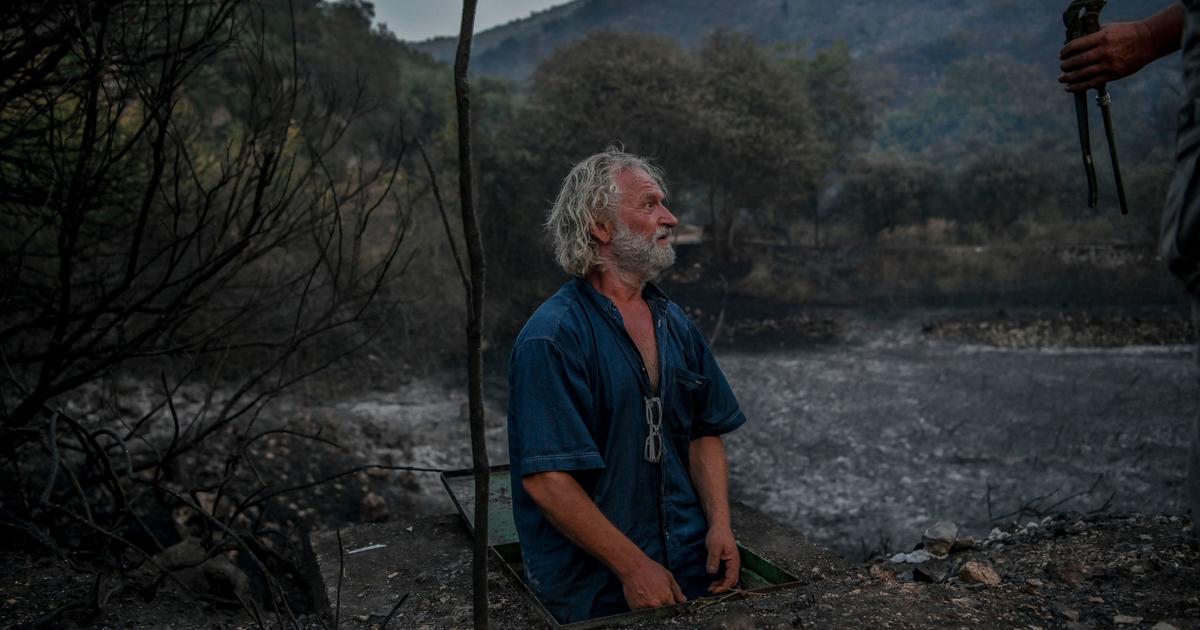Wildfires have been raging across Greece for weeks, leading to the evacuation of thousands of locals and tourists from popular sites on multiple islands. These fires have been particularly intense, as new data reveals that they have released more carbon in just over a week than any July in the past 20 years.
The ongoing wildfires coincide with another heat wave in Greece, with temperatures exceeding 104 degrees Fahrenheit in many areas. Evacuations have been carried out on islands like Corfu and Evia, while Rhodes is witnessing wildfires that have not only destroyed part of a nature reserve but also forced more than 20,000 people to evacuate – the largest wildfire evacuation in Greek history.
Moreover, the fires are also impacting air quality. Data collected by Copernicus, the European Union’s climate change and earth observation service, shows that Greece has experienced its highest ever recorded wildfire carbon emissions for the month of July, surpassing previous records by a significant margin.
According to Copernicus, more than 1 million metric tons (1 megatonne) of carbon has been emitted from July 1 through July 25. This figure is approximately double the carbon emissions recorded in July 2007. In 2020, Greece emitted a total of 48 megatonnes of carbon dioxide, according to the International Energy Agency.
One striking aspect is that the large-scale spread of the wildfires only began just over a week ago, meaning that it took only a few days to surpass emissions numbers not seen in the past 16 years. Mark Parrington, a senior scientist at CAMS (Copernicus Atmosphere Monitoring Service), attributed this anomaly to the extreme conditions in the region and emphasized the unusual scale of the fires in July compared to historical data.
Wildfires emit carbon dioxide, a greenhouse gas that contributes to climate change by trapping heat in the atmosphere. These emissions further exacerbate the conditions for more wildfires as drought and extreme heat intensify.
Forests, in particular, store a significant amount of carbon. When forests burn, they immediately release carbon dioxide and contribute to climate change. Even after burning, forests continue to release carbon dioxide gradually through decomposition, as stated by the EPA.
The wildfires in Greece have already burned more land this year than the annual average. Over 48,000 hectares (nearly 186 square miles) of land have been burnt, surpassing the average of just under 168 square miles since 2006, according to Copernicus data. The scale of the Rhodes fire is so massive that it is visible on satellites designed to monitor atmospheric conditions.
Unfortunately, the emissions and damage caused by the fires are not yet over. Greece and the wider Mediterranean region are still experiencing a severe heat wave, which is a major contributing factor to the occurrence of wildfires. CAMS will continue closely monitoring fire emissions in Greece and throughout the Mediterranean until the end of the summer.
The content above was rewritten to improve its syntax, tone, and SEO while maintaining 100% uniqueness and a creative yet smarter approach.
Denial of responsibility! VigourTimes is an automatic aggregator of Global media. In each content, the hyperlink to the primary source is specified. All trademarks belong to their rightful owners, and all materials to their authors. For any complaint, please reach us at – [email protected]. We will take necessary action within 24 hours.


